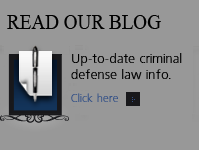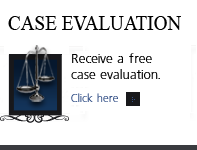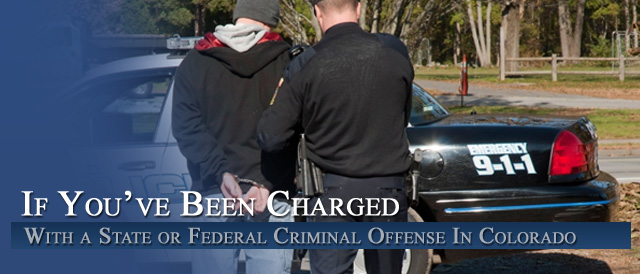


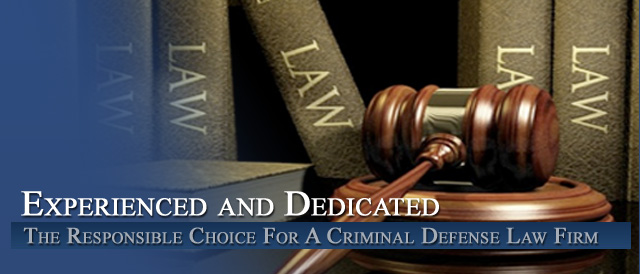
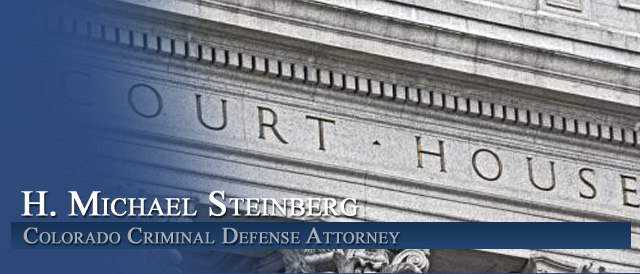
Colorado Criminal Law – A Case to Assist in Understanding the Affirmative Defense of Duress in a Case of Vehicular Eluding
The Case of:
People of State of Colorado v Palomo
Case No. 09CA1095 (CO Ct. App., Aug. 4, 2011)
In this case – the Defendant appealed his conviction entered on jury verdicts finding him guilty of vehicular eluding and the lesser non-included charge of eluding or attempting to elude a police officer.
Here is an Explanation of the Colorado Criminal Charge of Vehicular Eluding
Section 18-9-116.5(1), C.R.S. 2010, defines vehicular eluding:
Any person who, while operating a motor vehicle, knowingly eludes or attempts to elude a peace officer also operating a motor vehicle, and who knows or reasonably should know that he or she is being pursued by said peace officer, and who operates his or her vehicle in a reckless manner, commits vehicular eluding.
There is no motive requirement for vehicular eluding, such as fleeing the scene of a crime to avoid capture. There is no culpable mental state other than the defendant’s knowledge that he or she is being pursued by a peace officer. There is no need to prove why the peace officer initiated the pursuit.
Vehicular eluding is normally proven through the testimony of the peace officer or officers whom the defendant eluded or attempted to elude. The officers can describe the chase, the indicia they exhibited that they were peace officers, and the defendant’s driving. Suffice it to say, there would appear to have been no need here to prove, or present evidence of, the events which occurred in the bar parking lot in order to convict defendant of vehicular eluding. In that sense, the eluding counts are unrelated to the events in the bar parking lot.
Facts In This Case
The Defendant argued in this case that the trial judge made an error when it refused to instruct the jury on the affirmative defense of duress.
A defendant is entitled to a duress instruction on a threshold showing of
(1) an immediate threat of death or bodily injury;
(2) a well-grounded fear the threat will be carried out; and
(3) no reasonable opportunity to escape the threatened harm.
According to defendant’s statement given during an interrogation following his arrest, he picked up a friend who was carrying a handgun, which he hid under the hood of the vehicle. The two men went to a bar for drinks, where they met defendant’s sister, niece, and cousin to celebrate defendant’s sister’s birthday. Two other patrons, one of whom apparently was the victim, intruded on defendant’s party, causing a confrontation in the bar.
After closing, defendant and his friend left the bar and encountered the other party in the parking lot. According to defendant, he and his friend started to drive away but his friend asked defendant to stop while they were still in the parking lot. The friend exited the vehicle and fired three shots, one of which inflicted a nonfatal head wound to the victim. The victim and others gave chase in another vehicle; they collided with defendant’s vehicle, damaging it and totaling theirs.
Shortly thereafter, a sheriff’s deputy, who had received a description of defendant’s vehicle, saw the vehicle, activated his emergency equipment, stopped the vehicle, identified himself, ordered both occupants to put their hands outside the window, and told them they were under arrest. After initially placing his hands out the driver’s window, defendant pulled them back in and drove away at a high rate of speed. With three police vehicles pursuing him, defendant ran several stop signs and drove forty-five miles an hour over the speed limit. The chase continued a considerable distance until defendant turned into a dead-end street, where he stopped at or near his girlfriend’s home. Defendant and his friend were arrested.
The Colorado Criminal Law Defense of Duress
Defendant next contends that the trial court erred when it refused to instruct the jury on the affirmative defense of duress.
The Standard of Review for Affirmative Defenses in Jury Instructions
A defendant is not entitled to an instruction on an affirmative defense unless he or she first presents “some credible evidence” of that defense.
Whether a defendant meets this burden is a question of law which can be reviewed on appeal The court of appeals reviews the record as a whole for any evidence tending to establish the affirmative defense.
Analysis of the Duress Defense in Colorado
Section 18-1-708, C.R.S. 2010, which defines the affirmative defense of duress, provides in relevant part as follows:
A person may not be convicted of an offense, other than a class 1 felony, based upon conduct in which he engaged at the direction of another person because of the use or threatened use of unlawful force . . . which force or threatened use thereof a reasonable person in his situation would have been unable to resist.
A defendant is entitled to a duress instruction upon a threshold showing of:
(1) an immediate threat of death or bodily injury;
(2) a well-grounded fear the threat will be carried out;
and
(3) no reasonable opportunity to escape the threatened harm.
In addition, any threat must be more than mere speculation or a veiled threat of unspecified future harm.
Further Analysis of the Fact Pattern
The only evidence in this case that was related to duress was defendant’s statements during his police interrogation, which were admitted into evidence during the prosecution’s case-in-chief. During that interrogation, defendant told police he drove away at his friend’s instruction because he wanted an opportunity to dispose of the firearm.
The Defendant also said: “I got kind of scared and I just like panicked, because I was drunk, and then I just took off.”
The Court held that the Defendant did not say that his friend pointed the firearm at him or threatened him with it.
The Court of Appeals said that even it is assumed that defendant was threatened with death or seriously bodily injury, there was no evidence that he had a well-grounded fear that the threat would be carried out, or that there was no reasonable opportunity for escape.
In this instance, (1) the two men were friends with no pending dispute between them; (2) the friend wanted an opportunity to dispose of the firearm; (3) the friend gave defendant the firearm prior to, or during, the chase; and (4) defendant returned it. These facts mitigate any immediate threat and, perhaps more importantly, show that defendant had a clear opportunity to escape.
Therefore, they concluded that there was no evidence of an immediate threat of death or bodily injury, a reasonable belief that a threat would be carried out, or the lack of a reasonable opportunity to escape any threatened harm.
Accordingly, they held that the trial court did not err in refusing to give the jury an instruction on the affirmative defense of duress.
Other Articles of Interest:
- Colorado Misdemeanor Vehicular Eluding – 42-4-1413 vs Felony Vehicular Eluding Cases – 18-9-116.5
- Consent Defense In Colorado Sex Crimes Trials – What It All Means
- Criminal Defenses and Theories Of Defense In Colorado
- 025. COLORADO CRIMINAL CODE – OFFENSES AGAINST PUBLIC PEACE, ORDER, AND DECENCY – HARASSMENT ETC
- Colorado Criminal Defense Law: Criminally Negligent Homicide (18-3-105)

